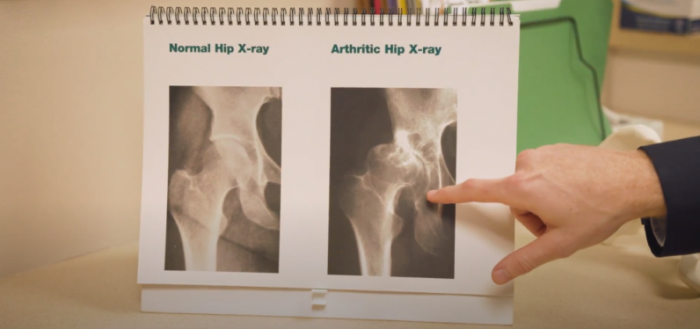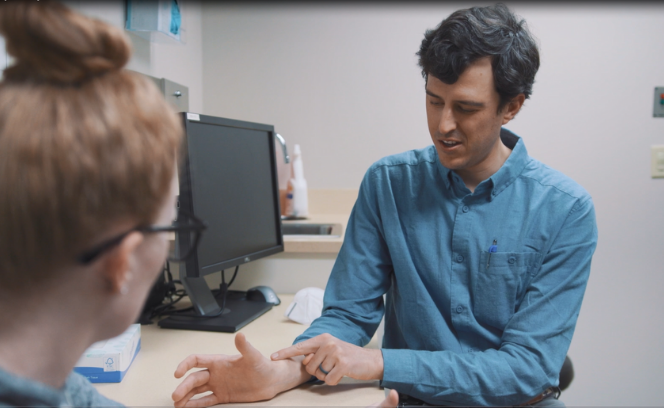
Walking has countless benefits for your physical and mental wellbeing – improved circulation, weight loss, strengthened bones and muscles, improved mood, etc. Walking is generally a safe and easy form of exercise, but injuries can still happen. If your walking is interrupted by aches and pains, it’s best to address the problem early on. Here are some common walking injuries and how to treat them.
Plantar Fasciitis
Plantar Fasciitis is a prevalent condition among walkers, characterized by inflammation of the plantar fascia, a band of tissue supporting the arch of the foot. The pain typically radiates from the bottom of the heel throughout the foot, making walking uncomfortable. Contributing factors include tight calf muscles, obesity, and repetitive strain on the feet.
Treatment for Plantar Fasciitis
Treatment for Plantar Fasciitis emphasizes rest, icing, and anti-inflammatory medications to reduce pain and inflammation. Additionally, stretching exercises targeting the calf muscles and plantar fascia can help alleviate symptoms and prevent recurrence. In severe cases, orthotic devices or physical therapy may be recommended to provide support and promote healing.
Foot and ankle specialist, Dr. Anthony Hinz, discusses his treatment for Plantar Fasciitis in this short video.
Dealing with Bunions
Bunions are bony protrusions that form at the base of the big toe, causing pain and discomfort during walking. Genetics, improper footwear, and foot structure abnormalities contribute to their development. While surgical correction may be necessary in severe cases, nonsurgical treatments focus on pain management and symptom relief.
Treatment for Bunions
Orthopedic footwear and padding can alleviate pressure on the affected area, reducing pain and discomfort. Physical therapy exercises can strengthen the muscles around the bunion, improving joint stability and function. In cases where conservative measures fail to provide relief, surgical intervention may be considered to realign the toe joint and alleviate pressure on the bunion.
Understanding Neuroma
Neuroma, also known as Morton’s neuroma, is a painful condition characterized by thickening of the nerve tissue between the third and fourth toes. Activities that involve repetitive stress or pressure on the forefoot can exacerbate symptoms, including burning pain and numbness.
Treatment for Neuroma
Conservative treatment options for neuroma include wearing properly fitting shoes with adequate toe space to reduce pressure on the affected area. Additionally, custom orthotic inserts can provide support and cushioning, alleviating symptoms during walking. Corticosteroid injections may be used to reduce inflammation and provide temporary relief from pain. In refractory cases, surgical removal of the neuroma may be necessary to alleviate symptoms and restore foot function.
Addressing Achilles Tendonitis
Achilles Tendonitis is a common overuse injury characterized by inflammation of the Achilles tendon, the largest tendon in the body. Excessive strain or repetitive stress on the tendon can lead to pain, swelling, and stiffness, affecting mobility and walking ability.
Treatment for Achilles Tendonitis
Initial treatment for Achilles Tendonitis focuses on rest, ice, and anti-inflammatory medications to reduce pain and inflammation. Physical therapy exercises, such as eccentric heel drops and calf stretches, can strengthen the tendon and improve flexibility. In severe cases, immobilization with a walking boot or brace may be necessary to allow the tendon to heal properly. Surgical intervention may be considered in cases of severe tendon damage or persistent symptoms that do not respond to conservative treatment.
Managing Ankle Sprains
Ankle sprains are common injuries resulting from the stretching or tearing of ligaments supporting the ankle joint. Walking on uneven surfaces or twisting the ankle during physical activity can lead to sprains of varying severity, causing pain, swelling, and instability.
Treatment for Ankle Sprains
Initial treatment for ankle sprains involves the R.I.C.E. protocol—rest, ice, compression, and elevation—to reduce pain and swelling. Immobilization with a brace or splint may be necessary to protect the injured ligaments and promote healing. Physical therapy exercises can improve strength, balance, and range of motion, restoring stability and function to the ankle joint. In cases of severe sprains or ligament tears, surgical repair may be necessary to restore joint stability and prevent long-term complications.
Dr. Hinz discusses what a patient should do if they sprain their ankle.
Coping with Hip Bursitis
Hip bursitis is a painful condition characterized by inflammation of the bursae, fluid-filled sacs that cushion the hip joint. Activities that involve repetitive motion or pressure on the hip, such as walking or climbing stairs, can exacerbate symptoms, causing pain, stiffness, and limited mobility.
Treatment for Hip Bursitis
Treatment for hip bursitis focuses on reducing inflammation and relieving pain through a combination of rest, ice, and anti-inflammatory medications. Physical therapy exercises can strengthen the muscles around the hip joint, improving stability and reducing strain on the bursae. Modifications to activity levels and posture can also help alleviate symptoms and prevent recurrence. In severe cases, corticosteroid injections may be used to reduce inflammation and provide temporary pain relief.
Walking injuries can disrupt daily activities and impact overall quality of life. However, with proper understanding and management, many common walking injuries can be effectively treated and prevented. By implementing appropriate measures, such as wearing supportive footwear, practicing good body mechanics, and gradually increasing activity levels, individuals can minimize their risk of injury and enjoy the numerous health benefits of walking for years to come. If persistent pain or discomfort occurs, consulting with your provider is essential to receive an accurate diagnosis and develop an appropriate treatment plan.
Stay informed about upcoming webinars and events, and gain valuable insights on leading a healthy, pain-free life from our experts by subscribing to our monthly newsletter. Click the button below to join!





